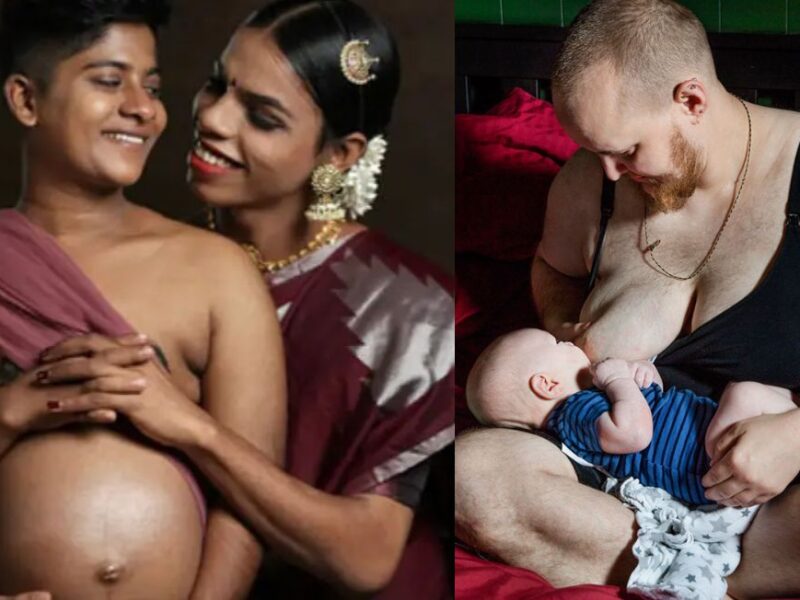Many parents feel that meeting their infant for the first time is a moment that will stay with them forever. The birth of new life held in your arms is indisputably lovely; it’s a sensitive, soul-stirring moment. But it’s also a little strange. Because, well, infants have a peculiar appearance. Please don’t put us to ᴅᴇᴀᴛʜ. Nobody warns you the kid would have a cone-shaped ᴄʀᴀɴɪᴜᴍ at first, for screaming out loud! And what about their skin’s horrible white, wax-like color, which hauntingly recalls the White Walkers from Game of Thrones? Not to add the ɢᴏʀᴇ and ʙʟᴏᴏᴅ…
Not exactly what you’d call a universal definition of ‘cute.’ “Despite what we see on Facebook postings and pregnancy announcements, infants don’t come out of the ᴡᴏᴍʙ wrapped in tulle or with flawlessly air-brushed skin,” says Denver-based birth photographer Monet Moutrie of Monet Nicole, who has captured an astounding 100 births via her exquisite lens. Newborns aren’t exactly what we’d anticipate from a Hallmark greeting card right out of the oven. The passage of your kid via the birth canal will give them an appearance that is entirely different from what you had in mind. But don’t be surprised by this.
Your Baby’s Eyes
Childbirth puts pressure on your newborn’s face, causing their eyelids to swell or puff out briefly. Due to the confined living quarters of the ᴡᴏᴍʙ, their legs may also emerge twisted or bowed. Don’t worry; the bends will soon straighten out.
Your Baby’s Sᴋᴜʟʟ
The baby’s sᴋᴜʟʟ bones may overlap as a result of the tight and narrow birth canal, resulting in a cone-shaped, enlarged ᴄʀᴀɴɪᴜᴍ after birth. This is especially true if you’ve had a long labor or had a vacuum-assisted delivery. After a few days, expect a rounder ᴄʀᴀɴɪᴜᴍ. Two soft, delicate patches in the top part of your newborn’s head, where the sᴋᴜʟʟ bones have yet to come together, will also be visible. These areas are known as ‘fontanels,’ and they exist to accommodate the developing brain of the kid. Don’t be concerned; they’re quite safe to brush, and they normally fuse in less than two years.
Your Baby’s Umbilical Cord
Upon birth, the stump or base of your baby’s umbilical cord is usually yellowish/greenish in color. The base will turn brownish-black as it dries out (and finally falls off two weeks after birth). During this time, it’s critical to keep the residual dry and clean by exposing it to the air and adhering to sponge showers as the area heals.
Your Baby’s Skin
Your baby’s face may have little white bumps called milia when he or she is born. They have the appearance of white pimples. No, your child isn’t going through some odd, hastened ᴘᴜʙᴇʀᴛʏ. These patches are harmless and will go away on their own within a few weeks. The top layer of your newborn’s skin will begin to flake immediately after delivery, resulting in ᴘᴇᴇling and dry skin in the first few weeks.
Your Baby’s Birth Marks
Pink or reddish spots on the eyelids, back of the neck, or forehead of your infant are possible. They’re known as ‘angel kisses’ (aw), and they’re brighter when your child cries. These markings normally go away over the course of a few months. They may disappear with time or just persist in some circumstances. “The transfer from ᴡᴏᴍʙ to world is lovely and characterized by vernix, ʙʟᴏᴏᴅ, and wrinkles,” says Moutrie, who has photographed infants from the moment they are born. And she should know, given the gorgeous photographs she’s taken of infants in their natural state.
“I adore taking birth photography because I get to record how infants look the instant they enter the world,” Moutrie says. and show how rapidly they may alter. It’s incredible to see how much they’ve changed in an hour, much alone a week!”


